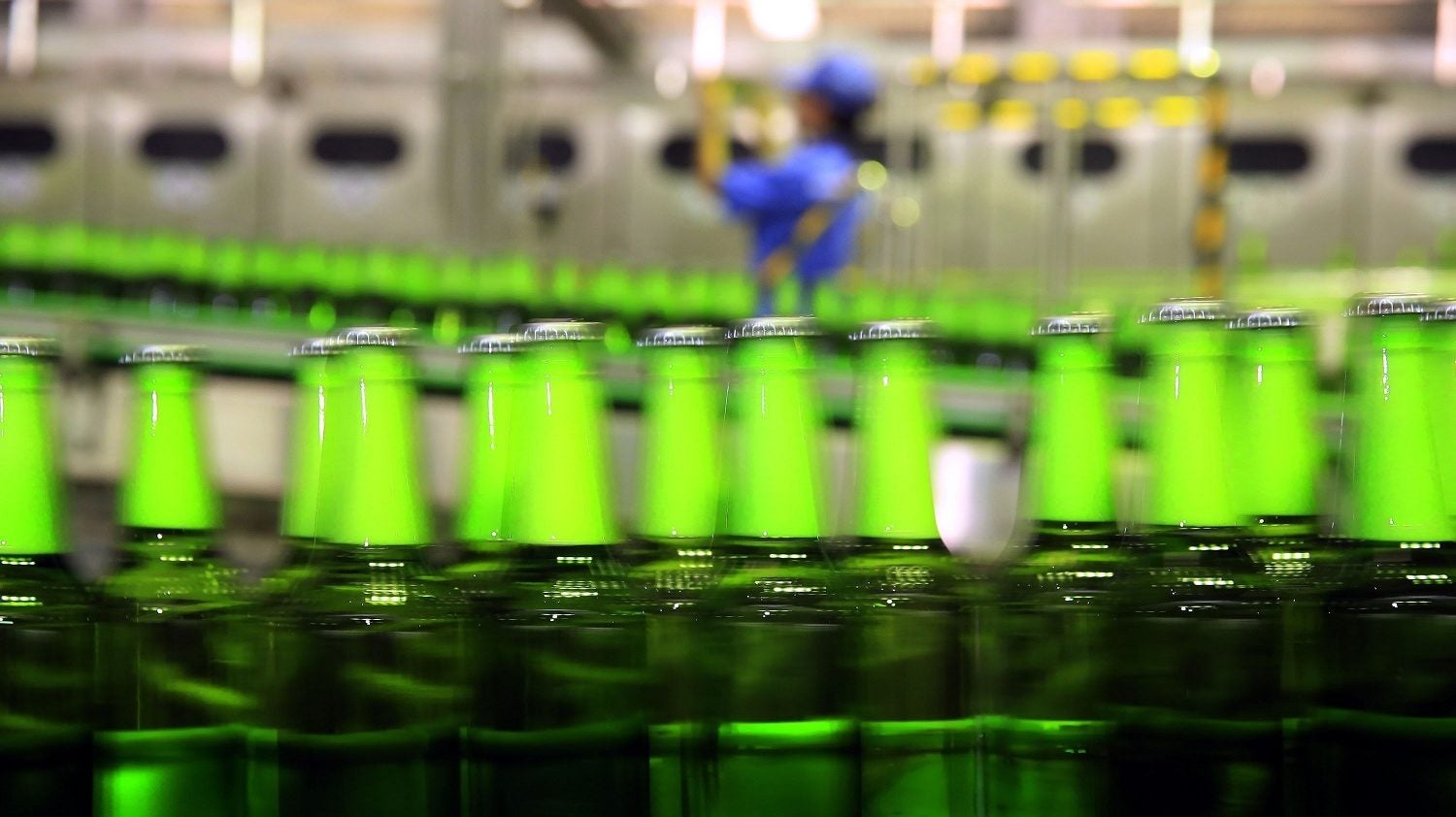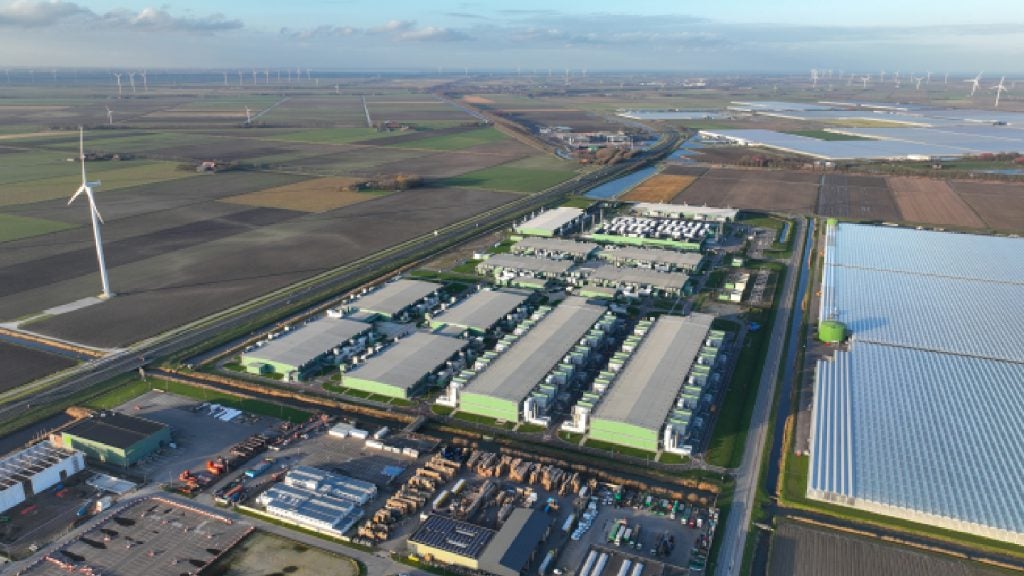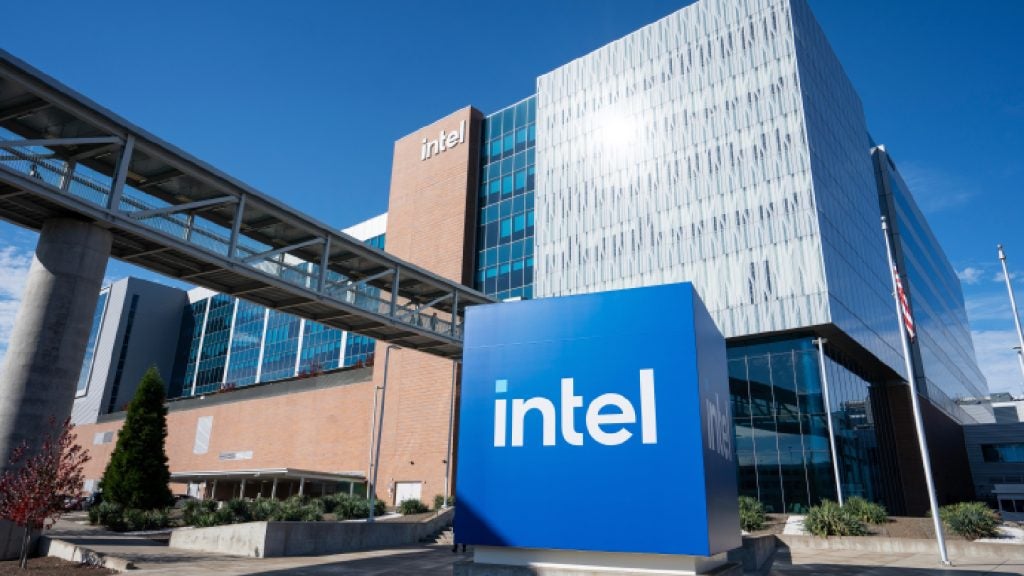
Internet of Things (IoT) technology is usually associated with smartwatches and other consumer products but the data insights IoT systems generate can also help brewers.
IoT refers to the use of connected devices to monitor and control the environment, as well as the people, objects and systems within. GlobalData, Verdict’s parent, forecasts that the global IoT market will reach $1.7trn in revenue by 2027. In beer, IoT is being employed in several ways, including to help optimise brewing processes, track kegs and monitor their temperature and keep tabs on stock levels.

Access deeper industry intelligence
Experience unmatched clarity with a single platform that combines unique data, AI, and human expertise.
Location and environment tracking
Asahi Group Holdings, home to brands from Peroni Nastro Azzurro to Pilsner Urquell, is using IoT within its overseas beer arm in two principal ways. Firstly, the Japan-based company has deployed IoT to assist in the storage of pallets. The system provides forklift drivers with information about where to put the pallets and whether the correct amount has been unloaded. This helps to ensure a ‘first in, first out’ principle is followed.
David Bidau, chief supply chain officer at the group’s Asahi Europe & International division, says using the tech in this way aligns with its “four priorities of people, profit, portfolio and planet”.
“One of our main ambitions with digitalisation automation is to make the lives of our people easier,” Bidau tells Just Drinks.
Asahi is also using KegLink, an IoT solution engineered by Australia-based tech firm BinaryBeer. KegLink is a sensor that attaches to kegs and gathers insights on location, temperature and movement. BinaryBeer says this data allows companies to improve quality and optimise logistics, which in turn can improve sustainability, save costs and improve employee workloads.

US Tariffs are shifting - will you react or anticipate?
Don’t let policy changes catch you off guard. Stay proactive with real-time data and expert analysis.
By GlobalData“Considering a keg’s cost is up to a few hundred dollars, safeguarding this asset is crucial,” BinaryBeer CEO Michael Burton says. “Moreover, a single keg can transport beer worth tens of thousands of dollars in its lifetime so focusing on how smart kegs can boost sales, maintain beer freshness and promote sustainability is more beneficial than mere keg tracking.”
Quality and stock control
Netherlands-based IoT business Evalan has devised a technology for homegrown giant Heineken that monitors stocks and the quality of beer in chilled tanks. By checking temperature and volume, deviations in quality can be detected swiftly and deliveries of new stock can be optimised better.
Heineken has also been working to integrate IoT across its network of breweries. At the start of 2023, the company had 53 “connected breweries” with ambitions to link up more.
Connected Brewery is a Heineken programme to drive the efficiency of the Amstel brewer’s supply-chain operations. Its initiatives included the ‘connected worker’, which gives several tools to shop floor employees to go paperless and digital.
The programme uses IoT tech on Heineken’s production lines to connect machines to the cloud to collect data to drive efficiencies. The brewer says the tech can, for example, provide an analysis of stoppages or changeover times.
Working with IoT firm Schuberg Philis, the Strongbow cider owner is creating an ecosystem to connect workers and breweries with task management and ‘digital reality’ technologies (augmented reality, virtual reality and mixed reality).
Elsewhere, German multinational tech giant Siemens offers a range of IoT-enabled sensors, collaborating with the likes of Carlsberg and Constellation Brands.
And Chile-based VigaLab, which specialises in IoT for mining, has also developed beverage monitoring solutions. It worked with local drinks major CCU to develop sensors that track pressure and quality inside kegs at restaurants and bars.
The benefits of IoT
The host of different solutions indicates the benefits IoT can have for the industry.
Evalan CEO Henk Schwiertert tells Just Drinks that, through the real-time insights generated, significant cost savings can be made. Brewers can reduce or eliminate runouts, stock wastage and detrimental changes in the brewing environment.
It’s also suggested that IoT insights can also help companies to reduce their carbon footprint.
“Having real-time visibility of all products also allows real-time carbon footprint measurement, rather than annual reporting,” Steve Statler, the CMO of IoT platform provider Wiliot, says. “This allows for carbon reduction to become a metric for efficiency as well as sustainability.”
Siemens claims its IoT can go further still, using the tech for end-to-end tracking and tracing for Scope 1, 2 and 3 emissions. At Asahi, Bidau notes the keg-tracking data affords the brewer insights into how to optimise distribution in a way that reduces carbon output.
“You’re capable of understanding exactly where the keg is when it’s out of your brewery, where it’s spending its time and if it’s full or if it’s empty,” Bidau explains. “After that you can determine, how you can optimise, to reduce the time spent full in some locations or to optimise as soon as it is empty to go back to the factory.
“So, in a way, it reduces your carbon footprint by optimising the transportation. You reduce transportation because you can see sometimes that this keg may be picked by different players and has been moved around not in the most optimised way.
Challenges for brewing
Despite the potential benefits on offer, the implementation of IoT in the beer industry doesn’t necessarily come without difficulties.
“Many newcomers to the challenge might assume that implementing a solution like KegLink is straightforward — simply attach GPS sensors to kegs and transmit data wirelessly,” Burton says. “However, there are a range of challenges to overcome due to the unique nature of the draught beer supply chain.”
He cites geolocation, connectivity, durability and fill detection as aspects that required consideration in engineering KegLink.
Evalan and VigaLab also note fill detection as a key challenge to overcome alongside connectivity, with the need for data to be collected and transmitted, even through temperamental Wi-Fi in cellars and employees accidentally unplugging the power source for the devices.
Ensuring data accuracy can also be a challenge. Schwiertert explains that, initially, Evalan’s solution had difficulties due to the variations in tank sizes. The company had to develop mechanisms that could compensate for these differences.
“We work with beer tanks where the pressure in the beer tank is provided through air. The beer itself is inside in a protective bag and, on top of that, there is air pressure. We use that air pressure in a very specific way to determine how much beer is still in the tank,” Schwiertert says.
“Initial versions of it had challenges from an accuracy point of view because many beer tanks are different from each other in shape, form size and so forth. Over time, we developed technologies and mechanisms to tune and improve that and configured the measurement systems in a way that we compensate for all these differences between systems, so that now it works so well.”
Similarly, Siemens pointed to the lack of uniform technological maturity across company ecosystems presenting challenges, as some beverage and distribution plants have lacked the necessary connectivity and infrastructure prerequisites to deploy IoT applications.
In VigaLab’s case, with the sensor inside the keg, the company had to consider if the materials the sensors are made from are safe to be in contact with consumable liquid.
IoT and AI integrated
While IoT is now quite a mature technology, GlobalData suggests new benefits could be found from integrating the tech with AI for greater insights. The two can be used together, for example, to help improve sustainability and minimise wastage.
This is echoed by Schwiertert. “When you collect data through systems with machine learning, you have a very powerful combination,” he says. “It will identify the specific types of things you’re looking for, help you make improvements quickly and also improve the systems of your customers.
“We started with that combination about five years ago. We have a team of people specialised in that. There is really a natural extension of IoT and AI or machine learning.”







